How to Improve Your Sleep by Improving Your Lights
Sleep has massive importance on your ability to perform at your best every day, but it’s one of the most overlooked aspects of health. If you’ve ever spent the night caring for an infant every hour or finishing a paper in the wee hours of the morning, you’ve experienced firsthand the effects of sleep deprivation. Focusing becomes next-to-impossible, and getting through the day awake can be a challenge.
Improving your sleep is key to having a better mood, better cognitive functioning, and overall improved health. According to the Sleep Foundation, “light is the most important external factor affecting sleep.” Everyone knows it’s easier to sleep when it’s dark, but the link between lighting and sleep goes deeper than that. By learning more about this link, you can learn how to create an environment that will give you the sleep you’ve been dreaming of.
The Effects of Sleep (and Sleep Deprivation)

Before we discuss changing your lighting to help your sleep hygiene, let’s talk about why sleep is so important to your overall health. When you sleep consistently, you can “think more clearly, have quicker reflexes, and focus better” (NIH). The National Institute of Health says, “sleep…affects growth and stress hormones, our immune system, appetite, breathing, blood pressure and cardiovascular health.” Part of caring for yourself includes improving your sleep.
When you don’t get consistent and continuous sleep (7-8 hours per night for adults), your health suffers. Some of the more obvious effects of sleep deprivation include a worse mood, impaired cognitive functions, and a shorter attention span. But, did you know that not getting quality sleep can also increase your risk of hypertension, obesity, and Type 2 diabetes? While you sleep, your body performs important functions. If you have trouble sleeping consistently without waking up, it’s time to think about your lights.
Circadian Rhythms
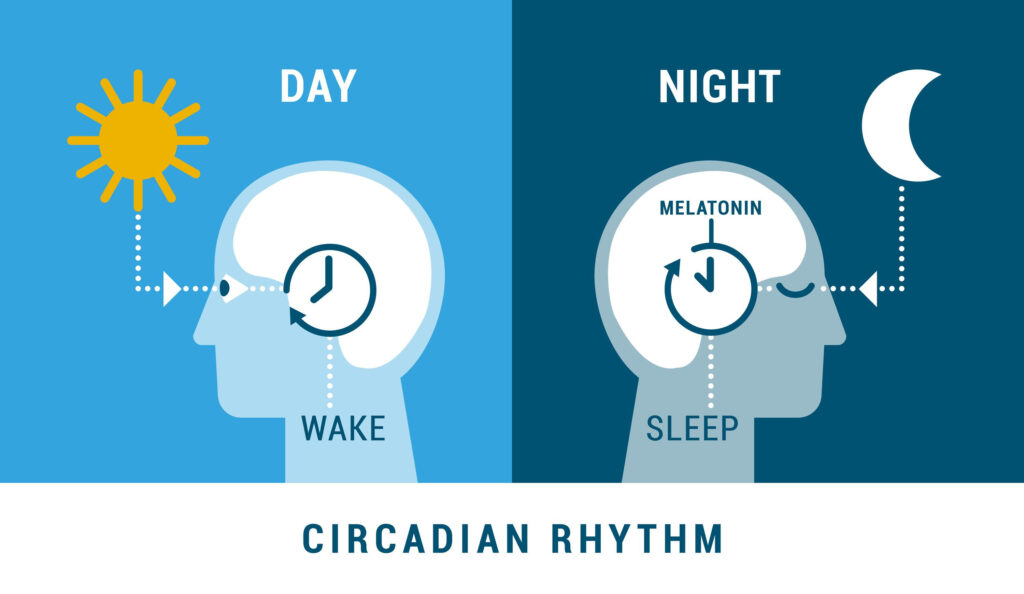
Light and sleep are two sides of the same coin. Light regulates your body’s circadian rhythm – your internal clock that tells your body when to sleep and wake. When light enters your eye, your brain processes information about the light and senses the time of day. Then, a signal is sent from your brain to your body to regulate organs and other systems in your body. (Sleep Foundation)
If you lived in a world where you were exposed to natural light only, your circadian rhythm would align with sunrise and sunset. However, since we live in a modern world where bright lights are available at the flick of a switch, you need to be more intentional about selecting the lights you expose yourself to, especially in the evenings. The lights you’re using may be affecting you more than you realize!
Melatonin
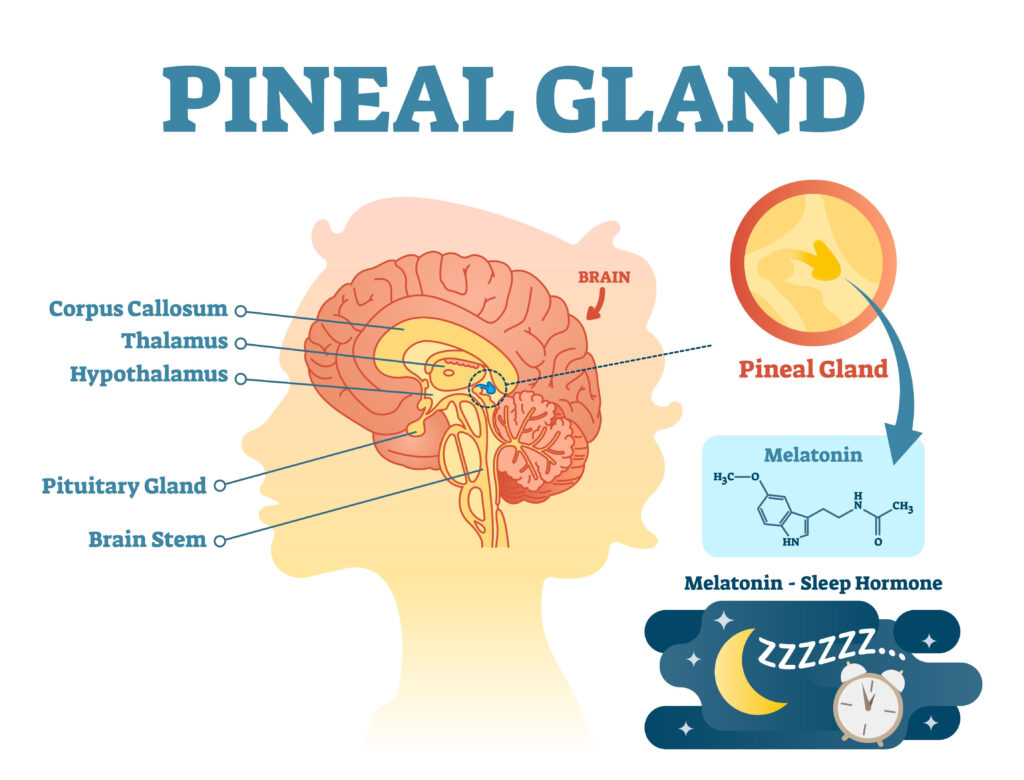
Light also affects the production of melatonin. Melatonin is a hormone your body makes naturally to help you regulate your circadian rhythm. It makes you feel drowsy and promotes quality sleep. The pineal gland in your brain (pictured above) initiates the production of melatonin in response to darkness. When you’re exposed to light, melatonin production slows down or stops. For some people, synthetic melatonin may be recommended or prescribed, but improving sleep hygiene should always be your first step toward healthier sleep. (Sleep Foundation)
Light and Sleep Hygiene
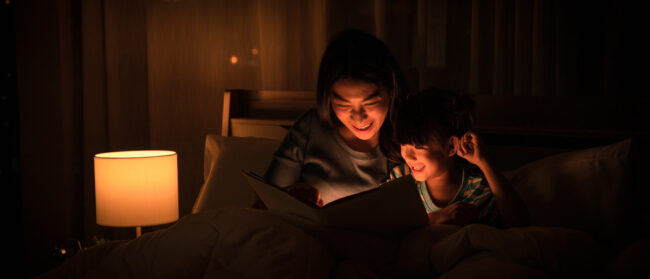
While we want you to sleep well no matter what, your body’s circadian rhythm can be a little sensitive. To account for that fact, you’ll need to manipulate your environment a little. Circadian rhythms are particularly sensitive to light two hours before bed and one hour after waking up. During these times, adjusting your lighting is imperative.
If you have bright household or bedroom lights, dimming them two hours before bed will prepare your body for better sleep. Increasing your light in the morning will keep you alert during the day. Getting dimmable lights is one way to control your lights’ brightness. Using several light sources (lamps, overhead lighting, etc.) is also an option. If dimmable overhead lights don’t work for you, find a dimmable bedside lamp instead! In the morning, turn on the brightest lights in your room and bathroom while you get ready to help yourself wake up. (CDC)
Light Color Effects on Sleep
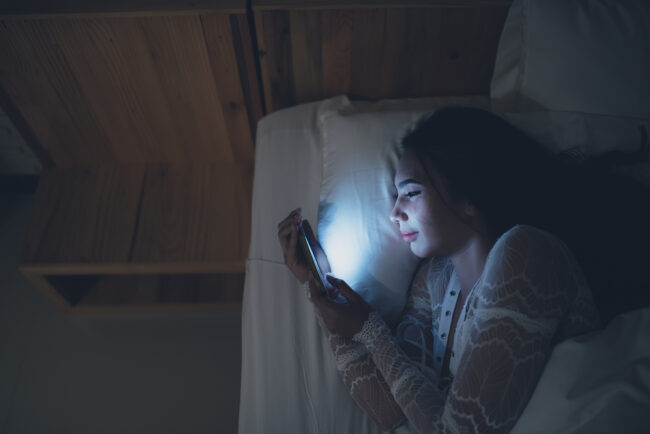
The color of light you choose at different times of the day will also impact your circadian rhythm and night sleep. According to the CDC, blue and white lights make the biggest difference on your circadian rhythm, especially during the sensitive period at night.
Blue and Bright White Light
White light contains blue light. Common sources of this light are the sun, LED lights, and digital screens. Exposure to white light can help to improve your mood and keep you feeling more alert and focused. During the day, using white light to wake up and to stay productive is a great idea.
If you’re having trouble sleeping, it’s best to avoid blue and white light sources at night. Yes, that means you really shouldn’t be scrolling on your phone in bed – you might think it’s helping you to unwind, but that light is actively disrupting your circadian rhythm. Some phones have a “night mode” that you can enable that will warm up the temperature of the light, which helps a little, but you’re better off reading a book with a warm, dimmed light.
Yellow, Red, and Orange Light
Warm Light, seen as yellow, orange, or red, comes from places like a fireplace or an edison bulb. LED bulbs can also be purchased that give off this type of light – they’re often called “warm white” or “soft white.” Yellow and orange lights have very little effect on your internal clock, so picking these colors for your room shouldn’t interfere with the sleep you’re dreaming of. Red light is the only color that has no effect on your circadian rhythm.
Get Better Sleep with Smart Lighting Choices
Changing your environment to promote better sleep can be as simple as switching out a few light bulbs. Pay attention to which kinds of light you have in your home, especially in the places you spend time at night. If you spend your evenings in the living room under bright white bulbs, that could be impacting the sleep you’re getting.
Fortunately, switching out the color of your light bulbs is a relatively easy fix for most fixtures. To give yourself the best lighting for a good night’s sleep, we recommend choosing warm white bulbs for your bedroom and bedside tables, and for the rooms you use in the evenings, such as the dining room, den, or living room.
Rooms where you need to focus, like the kitchen or your office, often have bright white lighting. Minimize your time in these places, or look at adding lamps or under-cabinet lighting that can allow you to use the room with a warmer, less bright light.
The multi-use spaces in your home where you need to focus during the day and relax at night can be the hardest. Lamps and/or dimmer switches in these areas are a must for good sleep hygiene. Another option would be to install color-changing bulbs that can take you from bright white to soft white throughout the day. Color-changing bulbs usually require you to change the color manually with a remote. If you’re willing to spring for smart bulbs, many can be programmed to change throughout the day or on command.
We know that fixing your lighting environment won’t magically take away all of the things that keep you up at night. But we can guarantee that making smart lighting choices at home will help you to go from early-morning alertness to late-night drowsiness without your light bulbs messing up your internal clock.
—
Choosing the right lighting is important for your health. If you need help optimizing your home’s lighting for a good night’s sleep, give the lighting experts at Western Chandelier a call, or stop by our showroom to chat in person! We’d love to help. Sweet dreams!
—
*Disclaimer: Lighting, while important, won’t replace expert health care. If you have concerns about your sleep, please remember to make an appointment with your doctor.
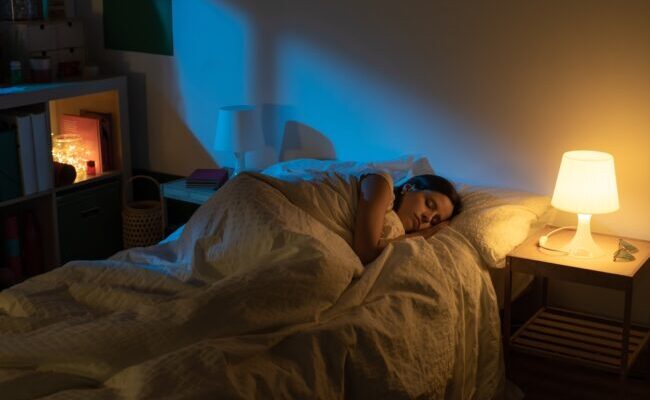
Leave a Reply